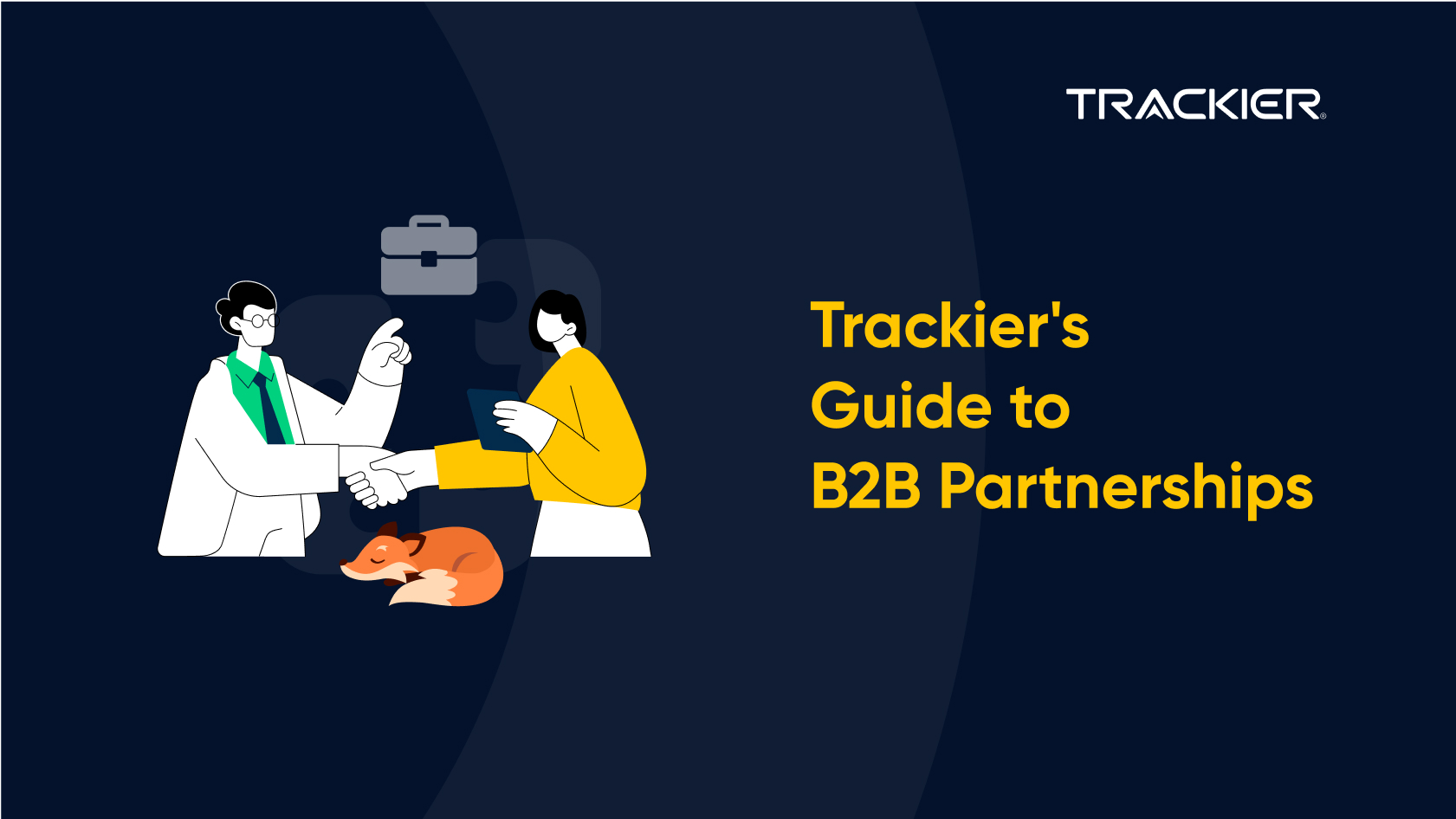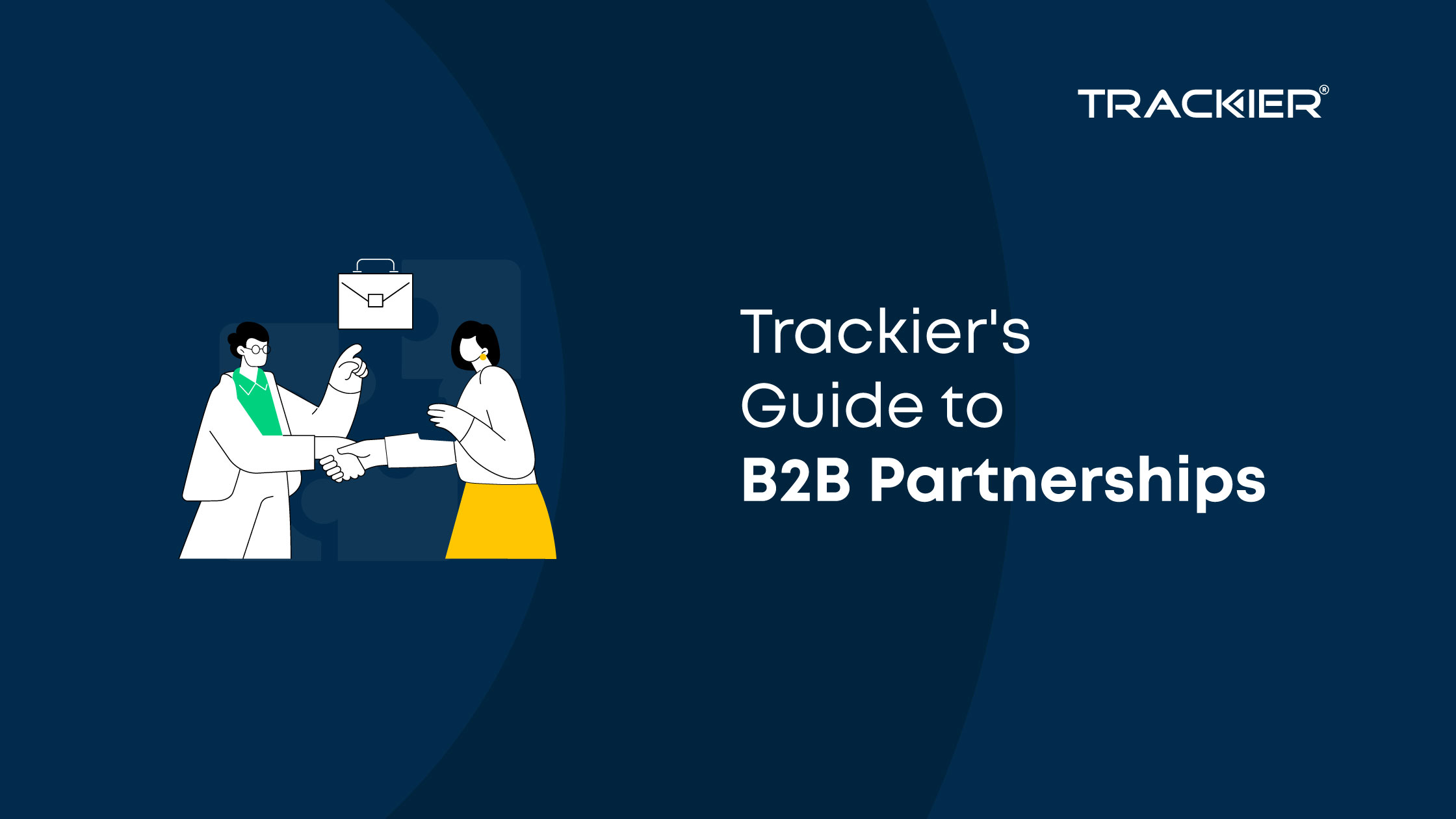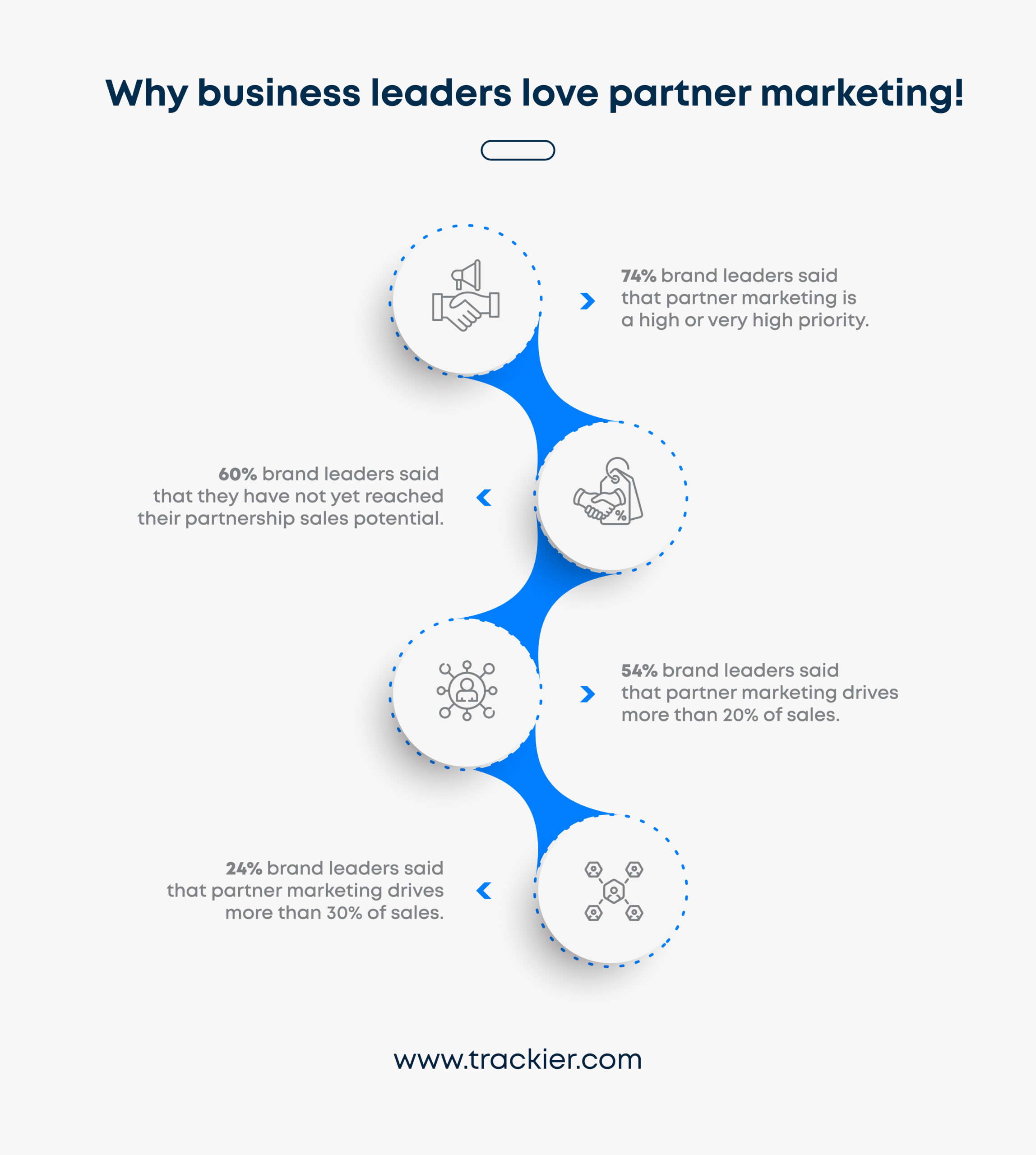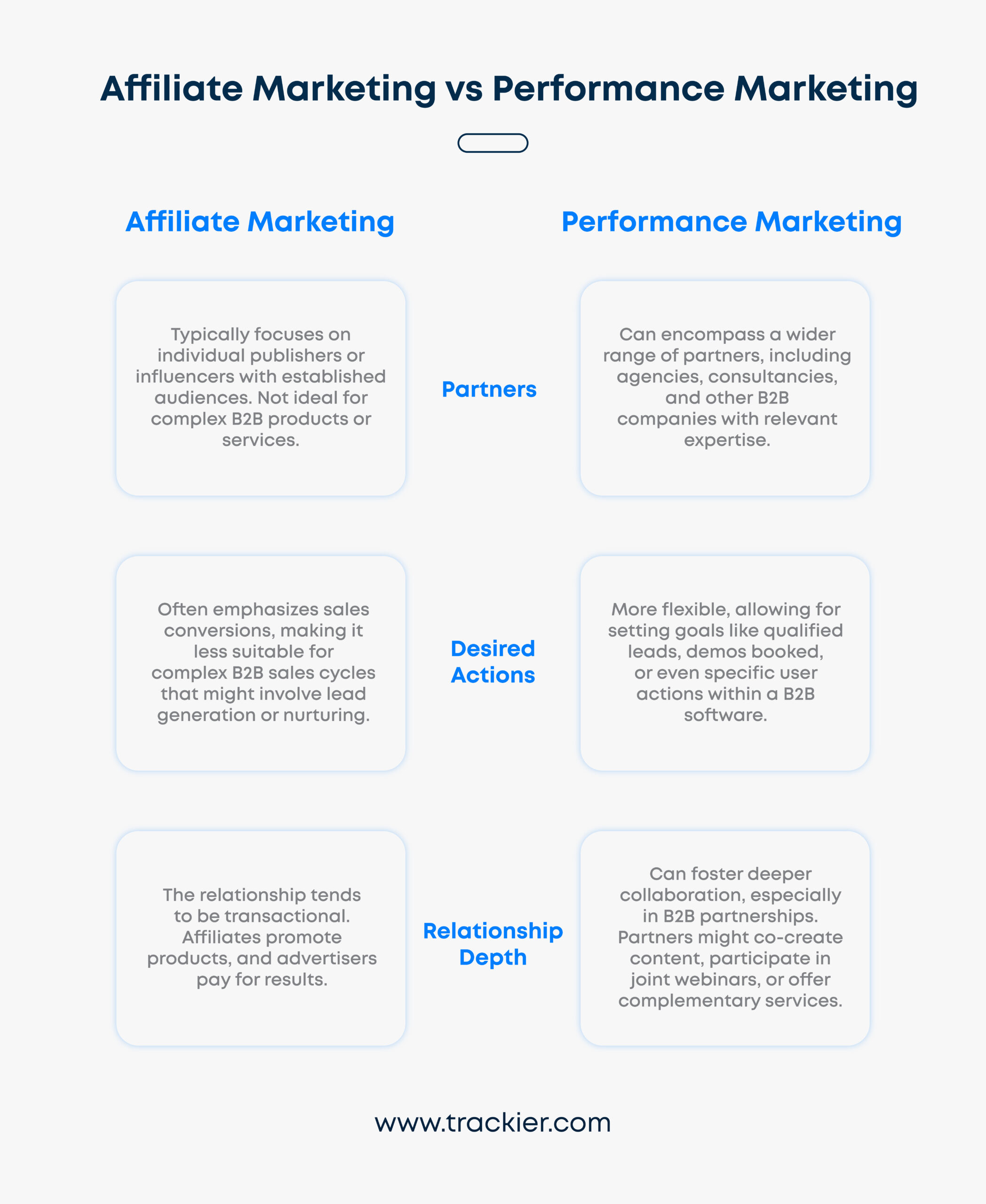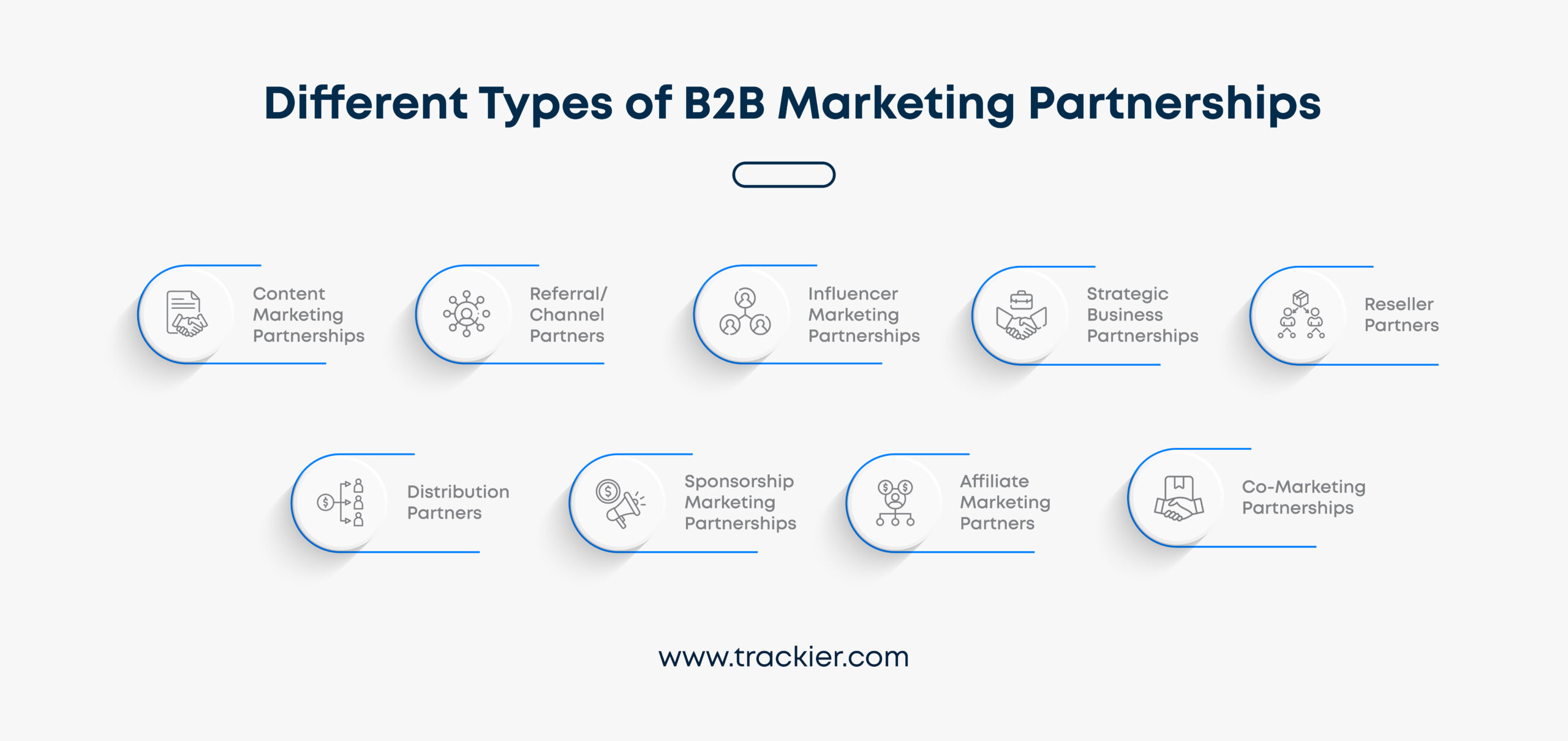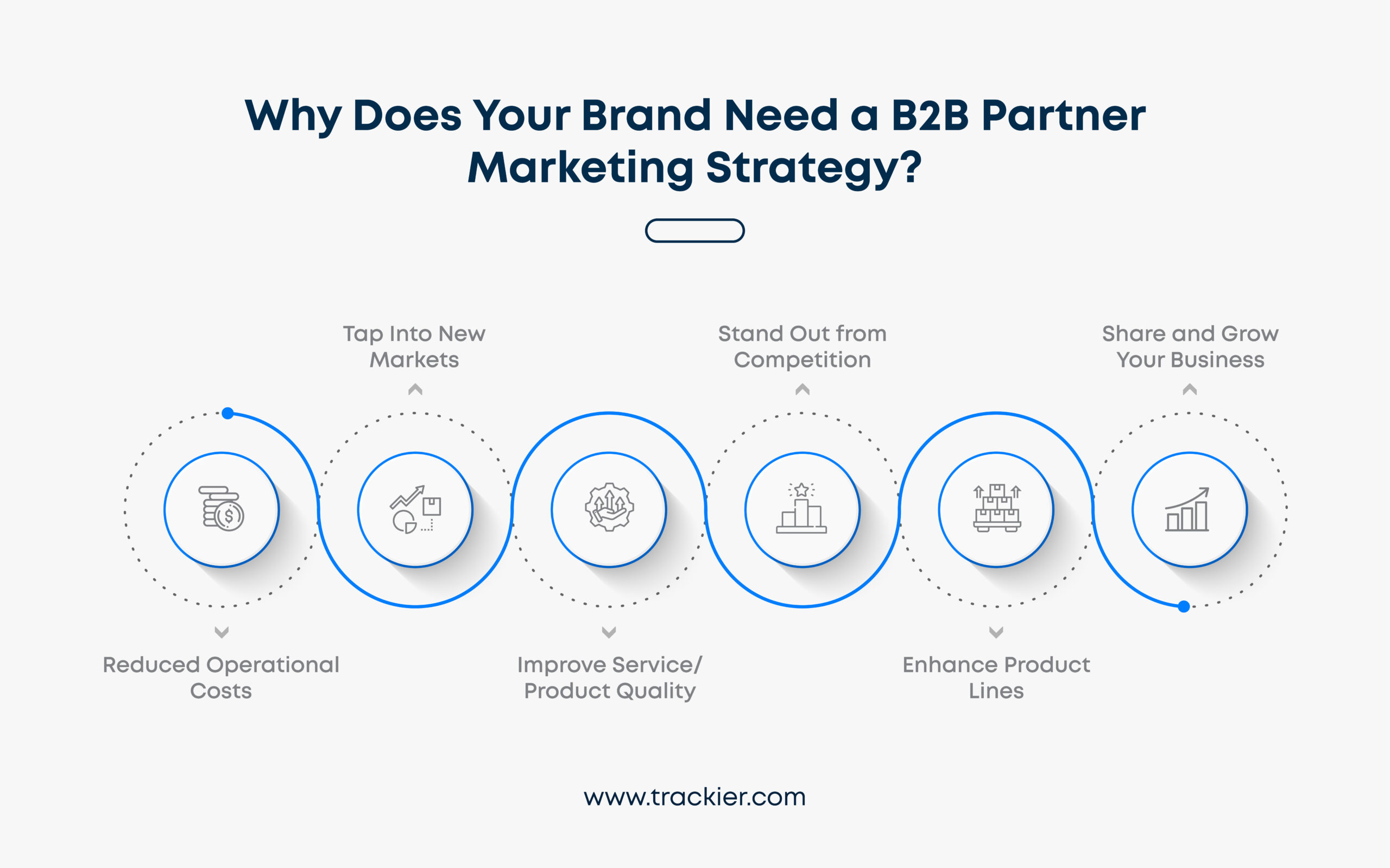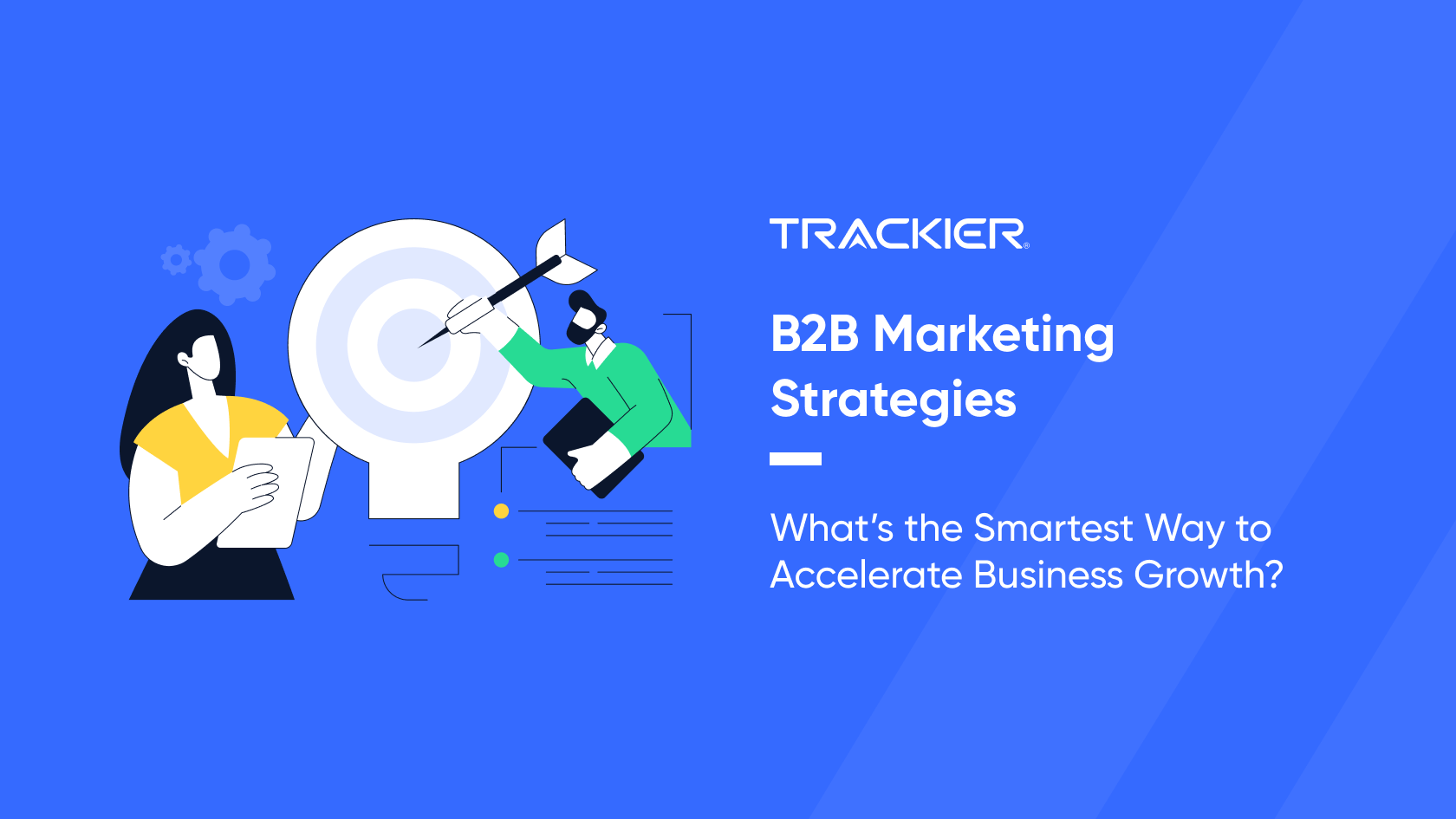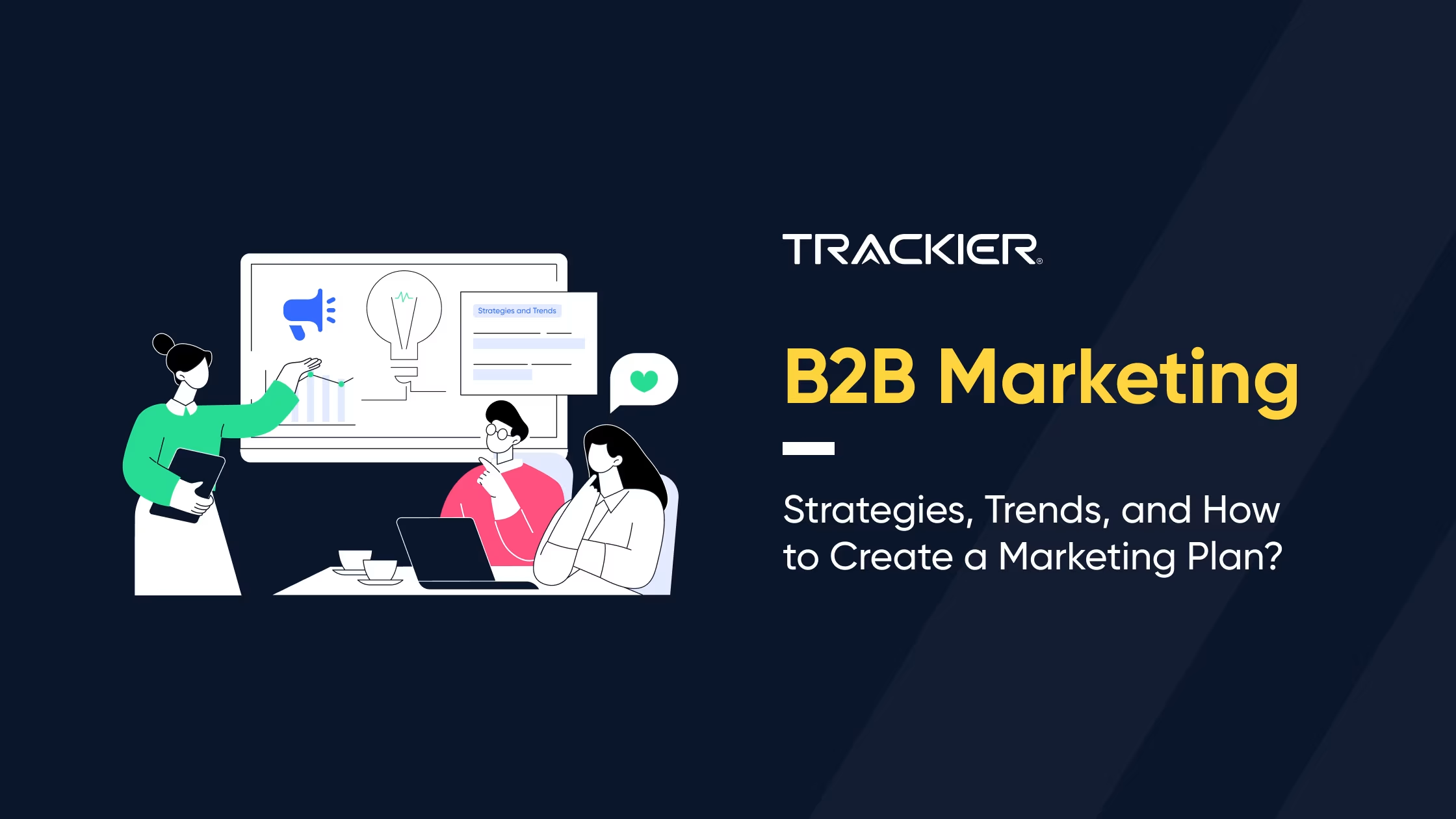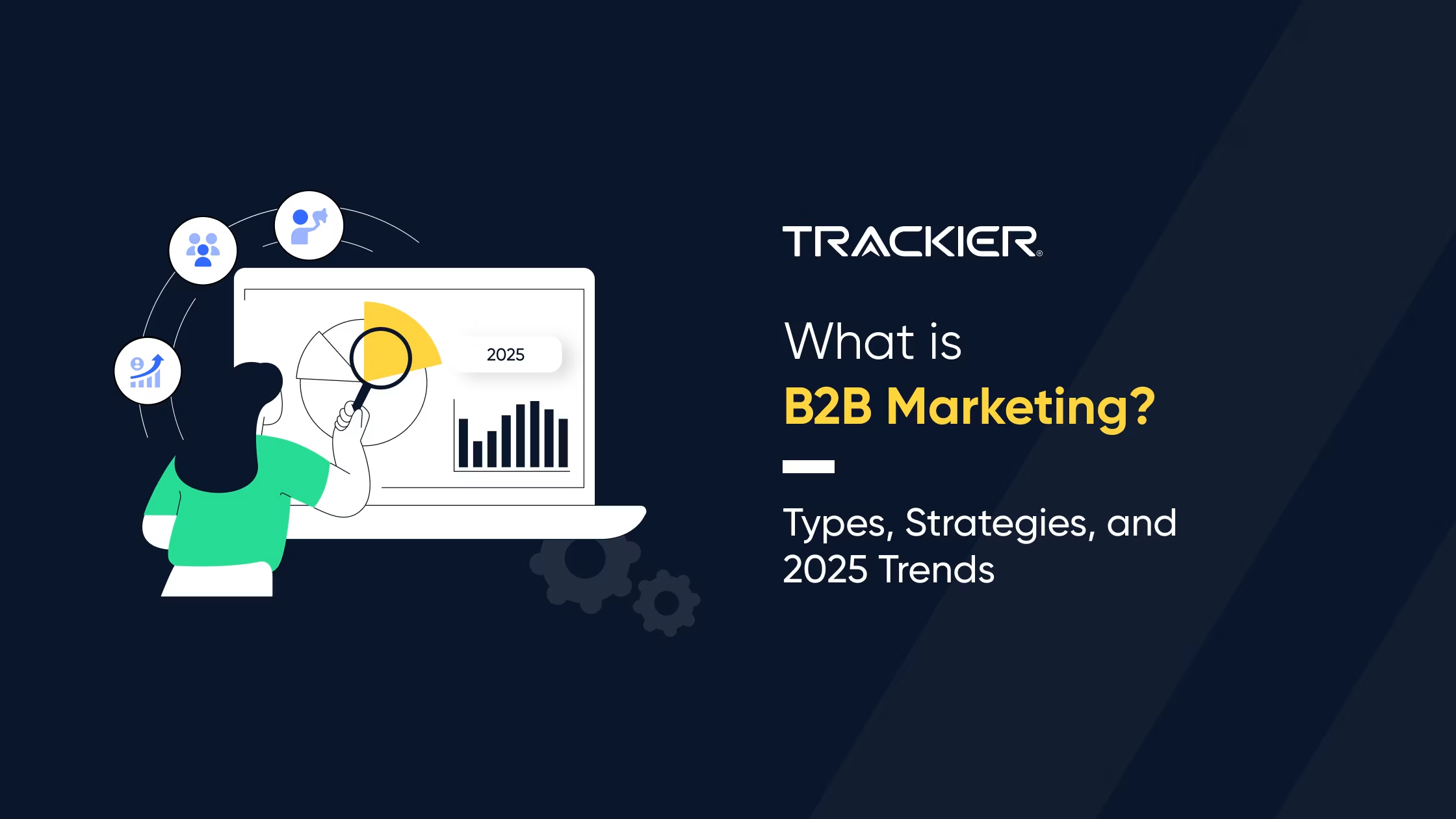The business world moves fast, and if you want to stay relevant, you need a winning partnership marketing strategy.
In this article, we won’t bore you with “technical” jargon.
Instead, we will show you some awesome strategies for B2B partnerships and partner marketing best practices to take your business to the next level!
We will cover what is partner marketing, how to find partners who are a perfect fit, tap into your existing customer network, and use B2B partner programs to benefit your business.
Follow these B2B marketing tips and you will be well on your way to long-term success.
The best part? There are tons of ways to partner up.
You can team with different kinds of businesses, from special loyalty programs to giant websites.
There is even a new trend of “transformational partners” who bring something extra special to the table, potentially changing the way you reach your customers.
What is Partner Marketing and Why are B2B Partnerships All the Rage?
Everyone wants to get the most out of their marketing budget, which is why partner marketing is crucial for marketing teams!
Studies show that for every dollar spent on B2B partner programs, you get $14 back – that’s a pretty sweet deal.
Here’s something you probably didn’t know: partner marketing can bring in almost 15 to 20% of sales for businesses.
According to a survey, most business leaders love partner marketing:
- 3/4th consider B2B partner programs as super important for their business.
- Almost 60% admitted they haven’t even reached their full potential with partnerships yet!
- Over half (that’s a lot!) said having a B2B partner marketing strategy brings in more than 20% of their sales.
- A quarter said having a channel partner marketing strategy helps generate over 30% of their sales.
These numbers show just how powerful B2B partner programs can be for growing your business.
How are Partnership Marketing, Referral Marketing, and Affiliate Marketing Different from Each Other?
When working on a project, isn’t it much more effective to team up with someone?
That’s the idea behind B2B partnership marketing in business.
Business partners decide to team up as it is a great way to appeal to a larger market than they would be able to individually.
It is a marketing concept that employs techniques such as affiliate marketing and referral systems to achieve specific goals.
It is better to consider partnership marketing as an umbrella strategy and affiliate marketing and referral programs as tactical approaches to this strategy.
Now that we understand what is partner marketing, let’s dive into the differences:
Affiliate Marketing:
In affiliate marketing, the affiliate is paid for each conversion they provide to the business they are affiliated with.
They may advertise the business on their website, social networks or videos, in return for a commission on customers sourced.
Referral Marketing:
Referral programs are about happy customers generally recommending the services or products.
Referral programs facilitate this since they offer existing customers incentives such as a discount for bringing in a new customer.
The focus here is on trust building and word of mouth amongst the existing customers. Though both of them are used to attract new customers to your business, both appeal to different motives.
Affiliate marketing hinges on the possibility of gaining a certain percentage of the sale, while referral marketing is based on people sharing their positive experiences.
Different Types of B2B Partnerships
1. Content Marketing Partnerships:
In content marketing partnerships, two or more brands work together to create and publish content, like blog posts, infographics, or even webinars.
The aim is to offer valuable insights about your business and products or services, while also educating the audience on relevant industry topics.
But here’s the catch – effective content marketing partnerships aren’t just glorified advertisements. They deliver real value to the readers.
When done right, they create value for everyone:
-
The audience:
They get valuable information or entertainment from reading the content.
-
The partner brand:
They gain exposure from being associated with this high-quality content.
-
Your business:
You reach new audiences who were not aware of your business before and establish yourself as a thought leader in your industry.
2. Referral/Channel Partners:
Ever wished your business had a built-in network of salespeople constantly promoting your products?
That is exactly what referral partnerships do!
This partnership is also commonly referred to as a channel partner marketing strategy.
Channel partners, in the B2B world, are basically companies that introduce you to their existing customer base.
It is a fantastic way to tap into a new market without the hassle of starting from scratch.
3. Influencer Marketing Partnerships:
Influencer marketing is all that is talked about in B2B digital marketing these days.
In B2B partnerships, you partner with industry experts who can testify to the quality of your products or services and vouch for them.
These B2B influencer marketing partners are trusted experts in their field and by collaborating with them, you can leverage their audience and established reputation to your advantage.
They can talk about your product or service in a way that resonates with your target audience, ultimately influencing actions such as purchases.
4. Strategic Business Partnerships:
Sometimes, collaboration goes beyond marketing campaigns and content creation.
Strategic business partnerships involve two or more businesses coming together to work towards a shared goal.
These goals can be anything from entering new markets and expanding product lines to improving the quality of products and services.
5. Reseller Partners:
In reseller B2B partnerships, you can look forward to having a highly sophisticated selling team that is solely associated with the sale of your products or delivery of your services, and all of this without the added payroll!
These partners serve as an extended sales force for your business.
They purchase your goods or services for a certain price (generally at wholesale prices) and then resell them to their customers at a slightly higher price, earning a commission on each sale.
This is a golden opportunity for businesses that are struggling to reach a wider audience base.
However, it is important to understand how reseller partnerships operate because they might differ based on the industry.
For instance, in the tech world, resellers can offer additional services that include installation, training, and consulting.
They gain detailed knowledge of the items the business offers, and they are no longer solely focused on offering the lowest price but on offering top-notch service.
6. Distribution Partners:
As your business grows, you might feel like you have hit a wall when it comes to reaching new markets or expanding your customer base.
Distribution partners help you break down those walls!
They utilize their established networks and relationships to help you tap into new markets and customers. They might even help fuel your growth by providing some capital, especially if you are stepping outside your current market.
Choosing the right distribution partner is very important.
Look for partners who are familiar with your industry and target market, and make sure they have experience working with businesses like yours. Also, consider using distributor portal software to streamline communication, efficiently manage orders, and provide partners with easy access to essential resources such as pricing, inventory levels, and marketing materials.
This ensures a smooth partnership where both parties are on the same page and understand each other’s goals.
7. Sponsorship Marketing Partnerships:
Ever wondered how those big companies get their names plastered all over sporting events and charity galas?
That is what sponsorship marketing can do for your business.
It is where you lend a helping hand (financial or otherwise) for events, activities, organizations or groups.
Businesses often use sponsorships to get their name out there, build goodwill, and show their support for the causes they care about.
It is a great way to gain public recognition and potentially attract new customers who share the values of the sponsored entity.
8. Affiliate Marketing Partners:
In B2B affiliate marketing you partner with companies or individuals who have an audience similar to yours.
These partners, known as affiliates, spread the word about your brand and products to their audience.
In return for each sale they help generate, they get a commission – a win-win for everyone involved!
They get to earn some extra cash, and you successfully reach your targeted audience base. It also helps boost overall brand awareness.
Finding affiliates is also an easy task and does not require a ton of effort.
9. Co-Marketing Partnerships:
With co-marketing partnerships, you team up with another business so that you can create a symbiotic marketing campaign that is twice as powerful.
In this type of partnership, two businesses share a portion of their marketing budgets to jointly promote each other’s products or services.
The co-marketing effort usually involves using the same ads or social media campaigns, encouraging customers to buy the products of both the companies involved.
While co-marketing is often used by larger brands, it can be equally valuable for smaller businesses.
The key to success lies in finding a partner whose product line complements yours or targets the same audience.
Why Does Your Brand Need a B2B Partner Marketing Strategy to Up Your B2B Partnership Game?
Before understanding why your business needs a B2B partnership, let’s establish what “growth” means for your company.
Figuring out what success looks like for you helps tailor your B2B partnership to deliver the biggest impact.
A term that you might have heard a lot is incrementality. It basically refers to the extra sales or conversions you get from a specific channel partner marketing strategy.
Focusing on incremental gains ensures your B2B partnerships are bringing in new business, not just stealing sales from your own pockets.
There are different ways to look at incrementality.
Some companies care most about acquiring “net new” customers – those who have never bought from you before.
Others might consider sales in new product categories for existing customers as a win.
Any revenue generated specifically through your partnerships can be considered an incremental.
This includes sales to both new and existing customers, driven by either increased purchase frequency (meaning they buy more often) or higher order values (they spend more per purchase).
By understanding your specific definition of incrementality, you can tailor your B2B partner marketing strategy to achieve your unique goals.
Now let’s go through some key reasons businesses form strategic B2B partnerships:
-
Reduce Costs:
When you share your expertise and resources through B2B partner programs, it can help bring operational costs down.
-
Test the Waters in New Markets:
Don’t want to start from the bottom? Partner with businesses that are already established in a new market.
-
Improve Service/Product Quality:
When partners share resources they can improve the overall quality of their products and services.
-
Stand Out from Competition:
When you partner with a business that has goals similar to yours, you ultimately reduce competition in the marketplace as you are jointly working towards a shared goal.
-
Enhance Product Lines:
When businesses collaborate, the shared expertise and knowledge base can help you come up with a new line of products or services that either of the businesses might have not been able to come up with individually.
-
Share and Grow:
Learning from each other’s wins and losses can prove to be a really helpful advantage for the growth of each of the businesses involved in a B2B partnership.
B2B Marketing Tips and Partner Marketing Best Practices
Here is a B2B partner marketing strategy list that will help you drive sales:
1. Drive Sales Through Content Marketing Efforts:
Content marketing is a business’ way of providing customers with useful and informative content to get new customers interested in your business and retain current ones.
Producing relevant content that your target audience seeks and cares about will make your business stand out as a leader in your industry.
Moreover, you will appear as a trustworthy option to potential customers.
Also, you can enhance this strategy by developing content collaboratively with partner businesses and by co-branding content. This content can serve as a crucial sales enablement asset, equipping your sales team with valuable resources to educate prospects, address objections, and nurture leads throughout the buyer’s journey.
This will help you in reaching out to a broader audience base in a short span, along with effectively reinforcing stronger bonds between partners.
For instance, one key channel partner marketing strategy is to collaborate and co-create white papers or webinars that discuss the shared issues and challenges that your target audience is facing.
This will help establish your reputation as a go-to resource for solutions.
2. Consider Account-Based Marketing (ABM):
ABM is an advanced form of marketing that is account or customer-focused. If you’re looking for effective ABM strategies for B2B success, implementing the right approach can significantly enhance your outreach and conversion rates.
Unlike traditional marketing which entails creating a general campaign where marketers and advertisers hope that the leads will respond, ABM includes the selection of high-value accounts that are most likely to respond positively to your marketing efforts.
To optimize this strategy, it is important to involve the partners in order to define the key accounts that both of you wish to target.
There are various benefits that can be obtained by partnering and working together on an ABM campaign.
For instance, it can be possible to collaborate and develop unique brand messages and activities for each of the accounts.
3. Focus On Your Referral Marketing Efforts:
Referral marketing is a promotional technique that relies on leveraging partners to refer potential clients to your business.
By encouraging partners to recommend new clients through incentives, you can effectively reach new potential audiences whom you would not have been able to reach on your own.
For this strategy to be effective, businesses can use incentives like discounts or rewards that would appeal to the partner offering referrals.
You could also give special offers or even access to a certain event or exclusive content to partners that bring in a specific number of customers.
This will make your partners want to bring business your way and further strengthen the bond between the two of you.
4. Host Joint Events or Webinars:
It is possible to co-host events or webinars with your partners to leverage their audience base.
Co-hosted events are also an excellent opportunity because working together with another business makes an event more appealing and informative.
To make the most of this strategy, it would be effective to discuss and identify which topics would provide the most value to your shared audiences.
You can then co-host an event or a webinar based on a theme or topic that offers mutual benefit to your business as well as your partners’.
Additionally, by reaching out to each other’s networks to advertise the event or the webinar, both businesses can increase the number of leads generated.
5. Leverage a Partners Social Media Audience:
Social media marketing is a technique that targets the use of social networks to promote various brands, products, and services.
You can also get your partners involved by collaborating with them on social media platforms so that you can expand the reach of your brand message.
In order to fully benefit from this strategy, you can coordinate with your partners to create a mutually beneficial social media strategy.
This may include re-posting each other posts, mentioning each other on posts, and working together on social media campaigns.
This way, you can boost your business’ presence and visibility on social media and, therefore, attract more customers.
6. Reward Partners for Bringing New Customers:
Looking to get your partners to help you locate a great number of new customers?
Here are 2 ways to make it easier for you-
-
Commission on New Customers Only:
Compensate partners only for purchases made by new customers that they bring in for your brand. This makes them reach out to an audience base that has not done business with you in the past.
-
Higher Reward for New Customers:
Provide a higher commission for the sales made through new clients than already existing clients. This makes the incentives more lucrative for partners who provide fresh leads.
Don’t limit yourself to just direct sales channels. Consider partnering with bloggers, other industry experts, or publications to reach an audience base that you may not have been visible to, yet.
These so-called ‘top-of-funnel’ partners can nurture leads and get them interested in your brand ultimately driving conversions.
Attribution models can assist marketers to decide on how to compensate the partners in such situations.
For instance, you could use a “first-click model” whereby the initial partner takes the entire commission or a “split commission model” that splits the commission between the top-of-funnel partner and the conversion partner.
7. Partner Up with Complementary Brands:
Striking strategic partnerships with complementary brands can be a game-changer.
By teaming up with non-competitors who share a similar target audience, you can leverage each other’s existing customer base to reach a whole new pool of potential buyers.
For maximum impact, choose partners whose audience doesn’t already heavily overlap with yours. Analyze customer data or choose brands that target a different but highly relevant segment within your overall market.
8. Focus on Customer Lifetime Value (CLTV):
Repeat customers are gold!
Partner with platforms that reward partners based on CLTV metrics.
This incentivizes them to attract high-quality customers who are likely to stick around for the long haul and become loyal brand advocates.
Long-term engagement can be rewarded in 2 ways-
-
LTV-Based Commissioning:
Partners receive a commission when a user signs up and additional rewards for each period they remain a paying customer. This encourages partners to prioritize customer retention.
-
Tiered Commissions Based on Engagement:
Reward partners progressively based on customer actions.
9. Leverage Data to Win Over the Competition:
Partners can offer valuable user data that can help identify potential customers who might be considering your competitors.
Here are two tactics to consider-
-
Shopping Comparison Power:
Partner with shopping comparison websites or cash-back platforms to display your brand and offers in search results for competitor categories or brands. This can influence buying decisions and attract customers who might have otherwise chosen your competitor. This can influence buying decisions and attract customers who might have otherwise chosen your competitor. Also, consider using Selenium Python to gather data on competitors and help you understand their pricing strategies, product offerings, and marketing campaigns even better.
-
Credit Card Purchase Data Targeting:
Partner with platforms that use credit card purchase data to create targeted campaigns aimed at past customers of your competitors. You can offer enticing deals or highlight unique features to convince them to switch to your brand.
10. Category-Based Commissioning:
This strategy rewards partners to boost sales for a new product or service among existing customers, rather than just acquiring new clients. It is one of the best ways to encourage engagement within your current user base and promote product adoption.
Conclusion
B2B partnerships are no longer just an option, it necessary for scalable, cost-effective growth. From co-marketing to referral programs, the best partner strategy helps you to reach new markets, increase sales, and deliver more value to your customers.
By aligning with similar businesses, sharing resources, and incentivizing the right behaviors, you can turn partnerships into powerful revenue drivers.
